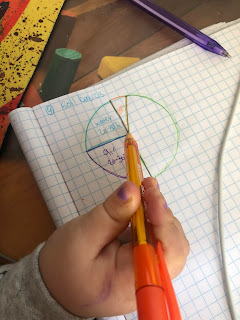Soil, soil, soil...
Maramataka Hina is in her countdown to her next full moon, today is Huna. This day is a take it easy day, a lacklustre day; the low energy from yesterday's moon (Ariroa) is still present today. Don't plant food and don't try and fish for kai. Meditation and reflective hīkoi are recommended today. Well a take it easy day was not on the cards for me... W is transitioning in to Kohanga, with her first day yesterday, this kid is high energy! I'm still with her on these visits and as much as a reflective walk or mediation would have been nice there was no chance of this happening this morning. I am definitely feeling the low energy pull though and my study of soil lately has been a struggle. In other news I did get 93% on my first horticulture assessment I sat last night so there is that win. A soil by any other name is still a soil... As this module has taken a day and an age to get through (ngā mihi Hina...) I am still learning about the names, the histories and the identi...




